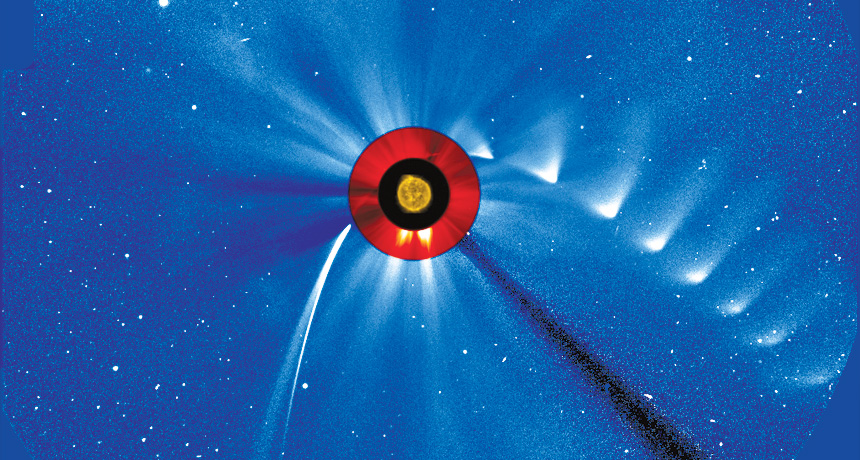
SHORT LIVED Comet ISON starts as a streak (left), disappears into the sun’s corona (red) and fades (right) as it emerges from the close encounter. This composite, time-lapse image shows the comet’s path from November 28 to December 1.
SDO/SOHO/ESA & NASA